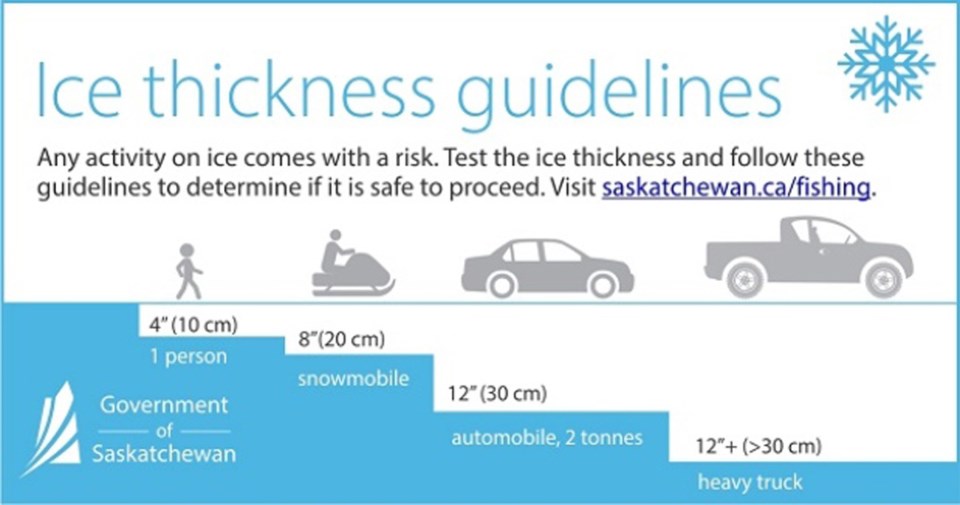With extremely cold weather, many people will assume ice surfaces are safe without checking. But, it’s important to always test the depths before venturing onto an ice surface.
                 Factors regarding ice thickness according to the Red Cross includes:
-Â Â Â Â Â Â Â Water depth and size of body of water.
-Â Â Â Â Â Â Â Currents, tides and other moving water.
-Â Â Â Â Â Â Â Chemicals including salt.
-Â Â Â Â Â Â Â Fluctuations of water levels.
-Â Â Â Â Â Â Â Logs, rocks and docks absorbing heat from the sun.
-Â Â Â Â Â Â Â Changing air temperature.
-Â Â Â Â Â Â Â Shock waves from vehicles traveling on the ice.
Ice Colour
-Â Â Â Â Â Â Â The colour of ice may be an indication of its strength.
-Â Â Â Â Â Â Â Clear blue ice is strongest.
-Â Â Â Â Â Â Â White opaque or snow ice is half as strong as blue ice. Opaque ice is formed by wet snow freezing on the ice.
Grey ice is unsafe. The grayness indicates the presence of water.




